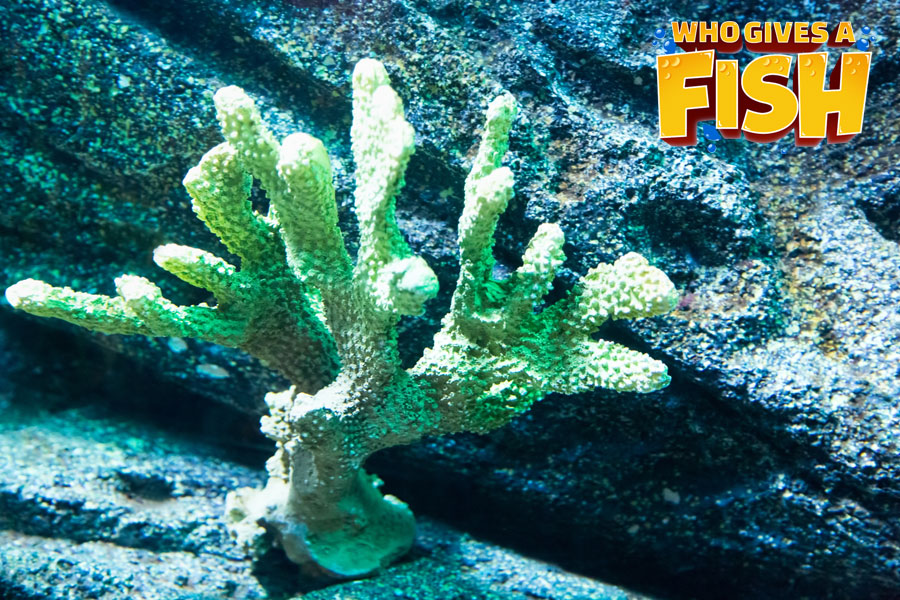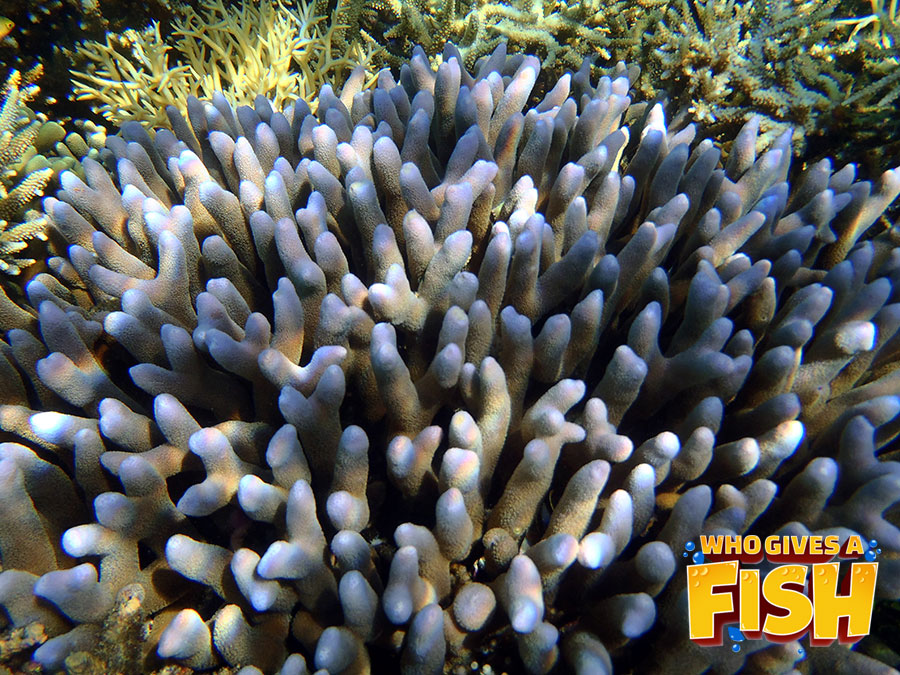Horn Coral
The Horn Coral, Hydnophora rigida, is a lovely little coral. Is has a natural green and brown color and an unfortunate yellow when it has insufficient lighting. Its green coloring can often be quite fluorescent as well. In will grow in a branching, arborescent colony that doesn’t have an encrusting base, however it has been reported that some corals have encrusted in reef tanks.
The Horn Coral also goes by the names Deer-Horn Coral, Branch Coral, Green Horn Coral, Knob Coral, Velvet Horn Coral and the Thorny Coral.
- Experience Level: Moderate
- Hardiness: Sensitive to poor water and lighting
- Minimum Tank Size: 50 gal (190 L)
- Lighting Needs: High
- Temperature: 74° – 83° F (23° – 28° C)
- Gravity: 1.023 – 1.025
Table of Contents
Introduction
Aquarium Setup
Difficulty
Feeding
Breeding
Social
The Hydnophora genus will grow in several different forms which will be either arborescent or encrusting, but all will have a “furry” appearance to them due to having Hydnophora. Their unique skeleton will form what appears as small mounds or bumps that are seen on the surface of the corals. They generally like to form where the common wall intersects with corallites.
The Horn Coral is rated as moderately easy to care for and very easy to frag. Its biggest requirement is moderate to bright lighting and a good water flow.
When observed in the wild, their polyps will extend only at night, but in captivity they are generally a lot more eager to feed so polyps will be extended in the day as well.
They will consume a lot of food that’s offered and need it as they grow quite fast. This coral is known to be very aggressive and should not be placed close to other corals that can be harmed from its sweeper polyps which will sting.
The Hydnophora genus will grow in several different forms which will be either arborescent or encrusting, but all will have a “furry” appearance to them due to having Hydnophora. Their unique skeleton will form what appears as small mounds or bumps that are seen on the surface of the corals. They generally like to form where the common wall intersects with corallites. These corallites (holes) are the location of the tentacles, where in the wild they will come out at night and can be seen both during the day and at night in home reef tanks.
Aquarium Setup
A well established aquarium that has at least 6 months history is highly recommended. You will also need a well established and healthy refugium producing natural food. Reef safe fish are recommended as their waste is also beneficial.
The Horn Coral does well around the mid levels in the tank with metal halides. Other lights, not producing light not as strong, can be placed in upper regions. The corals coloration changes are good indications of its current well being. A weaker and more dull appearance is a sure sign of bad placement/lighting/diet. Make sure that no other corals can come in contact with your Horn Coral as they a aggressive and have been known to extend stinging sweepers. These will damage or kill other corals.
Horn Coral Aquarium and Parameter Checklist
- Minimum Tank Size: 50 gal (190 L)
- Lighting Needs: Moderate – High
- Temperature: 74° – 83° F (23° – 28° C)
- Specific gravity: 1.023 – 1.025
- Alkalinity Levels: 3.2 – 4.8 MEQ/L (8 – 12 dKh)
- Calcium: 380 – 430 ppm
- Phosphates: 0 (Avoid Phosphates)
- Magnesium Levels: 1350 – 1500
- Strontium Levels: 8 – 10
- Water Movement: Moderate
- Tank Region: All areas depending on lighting strength
Difficulty
The Horn Coral is moderate to easy to look after, with requirements of moderate-bright lighting and some good water flow around them. They are big feeders but can be susceptible to recession, bleaching and other common coral ailments. Reports from hobbyists have indicated that compact fluorescent lighting isn’t sufficient enough to keep these corals alive for over 1 year.
Feeding
The Horn Coral as seen in some LPS corals, have developed various feeding methods. Planktonic organisms and microscopic food particles will be captured from within the water column. Dissolved organic matter will be absorbed as well. They have a symbiotic relationship with marine algae, also called zooxanthellae from where they can source some of their nutrients as well.
In captivity, like that of other SPS corals they will use their zooxanthellae for nutrition but are also capable of feeding on larger food types that will be digested on the surface. Feed them finely diced shrimp and ocean fish as well as copepods and small crustaceans that occur naturally in mature tanks. It is ideal to feed them several times a week as they have fast growth rates.
Breeding
Horn Coral are male and females and will reproduce both sexually and asexually. In the wild they will reproduce sexually by releasing sperm and eggs into the water, resulting in the eggs being fertilized which turn into free-swimming planula larva. These will eventually settle in a new area on some substrate, becoming plankters. These will then form tiny polyps that will excrete calcium carbonate as it develops into a coral. Unfortunately, Planula larvae are very vulnerable to predation and only few of these end up surviving. Hydnophoras also have the ability to reproduce asexually, e.g. when large storms break off pieces of fragments that form new corals.




Social
Hydnophora are known for being aggressive corals whose sweeper polyps can sting or even eat other corals it encounters. They will actually fight with other corals that come across., so ensure they are kept away from your other specimens. Often, they can be found with small commensal shrimp. They are fine to be housed with reef safe fish.
Back to top